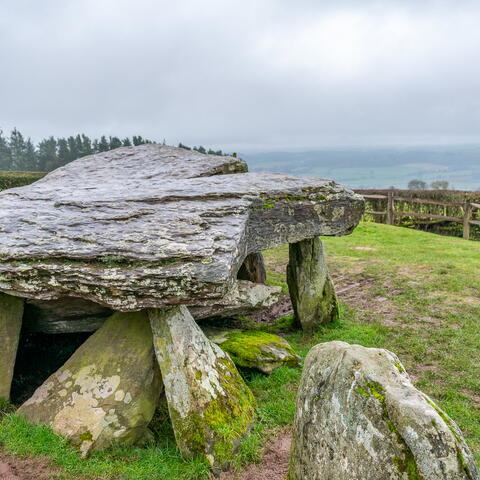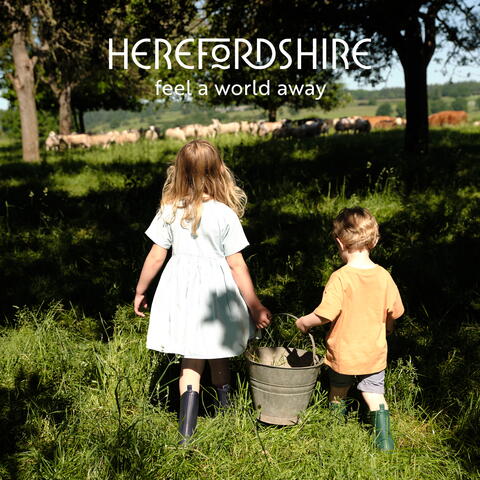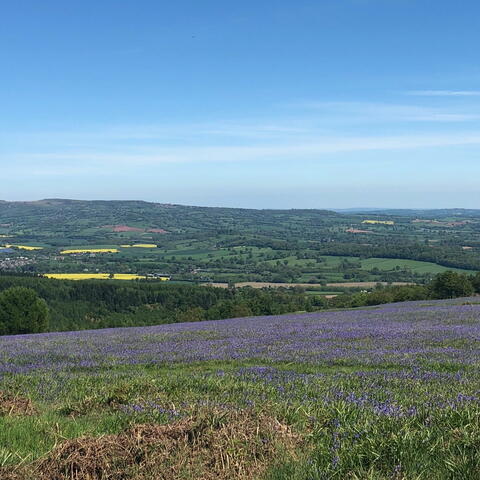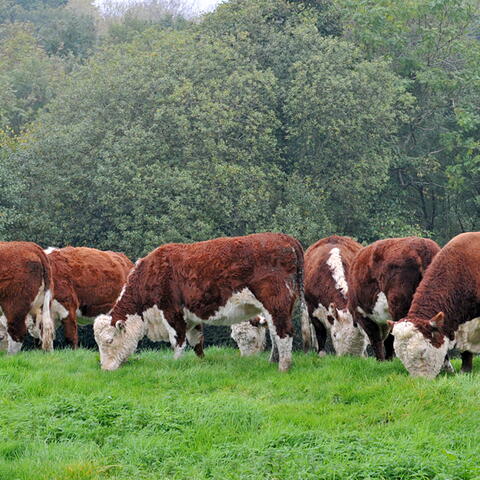Get To Know the Wye Valley National Landscape
Find out more about the landscapes and wildlife of Britain’s favourite river

Castles. Otters. Riverside pubs. Woods carpeted with bluebells and anemones. A diving peregrine falcon. Cider orchards. A romantically ruined abbey. Sheer-walled gorges and sweeping meanders. The gentle splash of a canoe paddle.
It’s easy to understand how the Wye captured the imaginations of so many people, from the earliest 18th-century tourists to all those who voted it Britain’s favourite river in a 2010 poll. Not only is the waterway itself among the most alluring, but the surrounding landscapes are captivatingly diverse, enriched with historic monuments dating back over 2000 years. Not for nothing did William Gilpin, who penned the first British travel guidebook after his own river odyssey, write in 1770: “If you have never navigated the Wye, you have seen nothing.”
The magnificent diversity of the surrounding countryside was formally recognised half a century ago, in 1971, with the creation of the Wye Valley Area of Outstanding Natural Beauty – now know as the Wye Valley National Landscape. It's he only designated landscape to straddle the border between England and Wales, encompassing a verdant 58-mile stretch of the lower Wye. Around half of the Wye Valley National Landscape lies within Herefordshire, roughly spanning the area between Mordiford, just a little east of Hereford, and the Welsh border near Monmouth.
And just as the terrain is varied – riverine meadows and orchards, ancient woodlands and limestone rock faces – so are the attractions and ways to discover the Wye’s wonders, with a host of activities opening up the region to walkers, cyclists, canoeists, families and food-lovers. For Gilpin and his contemporaries of the late 18th-century, the Wye epitomised their ideal of the picturesque – a succession of scenes to be painted. Today, there are so many more facets to admire in the AONB.
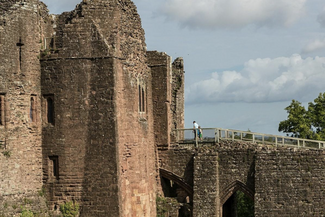
Nature
Along with the water itself, the most important habitat in the region comprises the ancient woodlands cloaking hills rising above the valley between Ross-on-Wye and Chepstow – indeed, more than a quarter of the National Landscape is covered in trees. These shady enclaves are important strongholds for roosting greater and lesser horseshoe bats, as well as hosting roe deer, dormice, woodpeckers, nuthatches, pied flycatchers and many other special bird species. In spring, patches of the forest floor are swathed purple with bluebells or spangled white by the flowers of wood anemones, wild garlic and wood sorrel. And in autumn, when mushrooms and toadstools fruit and glisten, listen for the roars of rutting fallow deer bucks.
Down by the Wye itself, look for the nearly nibbled grass stems and brown tictac-shaped droppings betraying the presence of water voles. If you’re really lucky, particularly in the early morning or late evening, you might spy the slick, lithe form of an otter hunting eels in the river, which is also home to salmon, trout and strange jawless lamprey.
Along with the ducks, swans, geese, herons and cormorants common on the Wye, duck down a side-stream and you might enjoy the sight of a dipper foraging in the water. In summer sand martins swoop low over the water hawking for insect prey, while peregrine falcons, buzzards and even goshawks soar above.
Curiously, more exotic creatures once roamed this land: in the 19th century, the fossilised bones of hyena, lion, mammoth, cave bear and even woolly rhinoceros were excavated from King Arthur’s Cave on the Doward west of Symonds Yat.
History
During the Iron Age, up to 2700 years ago, ancient peoples built forts on high ground overlooking the Wye – the hilltops of Little Doward, Symonds Yat, Capler Camp and Chase Wood near Ross all hosted settlements. More recently, though still in the distant past, great castles were constructed. The ruins of Wilton Castle are rather scant today, but farther downstream Goodrich Castle – first built in the late 11th century then reconstructed in much grander style by French nobleman William de Valence two centuries later – remains an imposing sight by the river. More medieval marvels lie over the border in Wales, notably the atmospheric skeleton of Tintern Abbey, tumbledown Monmouth Castle and the still-magnificent clifftop bastion at Chepstow.
Even before William Gilpin took his trip down the Wye in 1770, the region’s industrial heritage had left its mark on the landscape, though the smoking chimneys are gone from the riverbanks at Symonds Yat, Tintern and downstream. But you can still enjoy the cut and thrust of commerce in the 17th-century market hall in Ross-on-Wye, a characterful hilltop town that’s famed as the birthplace of English tourism – it was from here, in 1745, that Rector Dr John Egerton began taking visitors on boat trips down the Wye.
Activities
Though road access to the attractions of the Wye is good, it’s much more fulfilling to explore the National Landscape under your own steam. The classic approach is to follow in William Gilpin’s wake, drifting downstream by boat and admiring a unique perspective on the region’s attractions – it’s the only way to really appreciate the magnificent northern frontage of Goodrich Castle, for example. The whole Hereford stretch of the river is open to navigation, so you can take to the water in your own canoe, kayak or SUP, or hire one locally – various companies around Hay-on-Wye, Hereford, Ross-on-Wye and Symonds Yat rent out craft, paddles, dry barrels and life-vests, and can provide transport to designated put-in and pick-up points.
Alternatively, lace up your walking boots and take to the trail: over 30 miles of the Wye Valley Walk traverses the National Landscape. Hiking this route reveals the diversity of the region, diverting often from the riverbank to climb to the Iron Age fort at Chase Hill and Capler Camp, plus a number of nature reserves alive with butterflies and wildflowers in summer.
